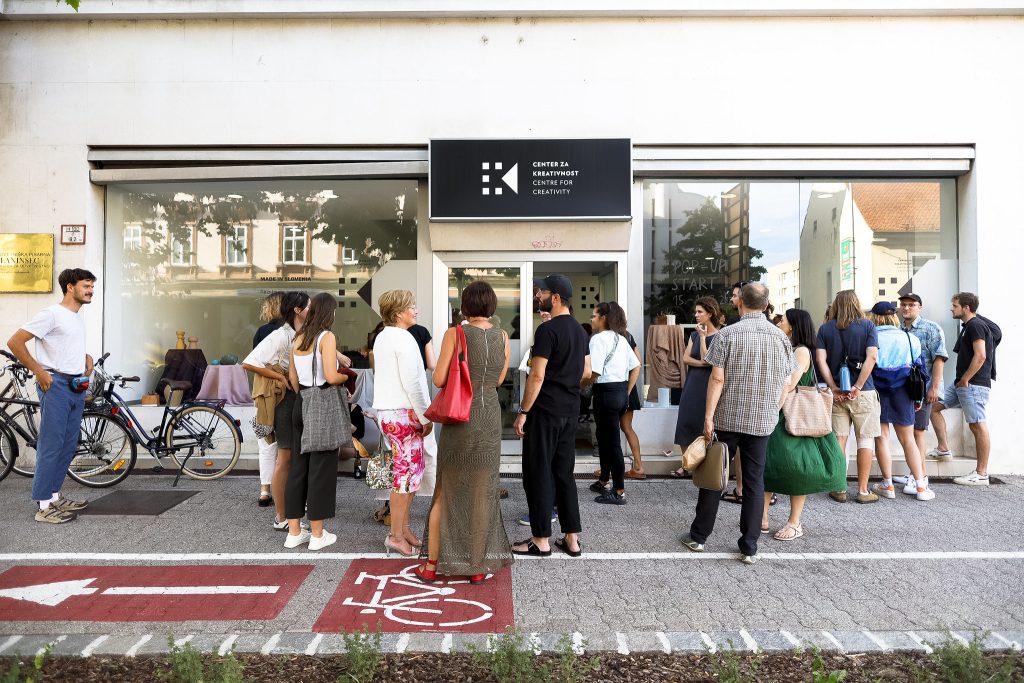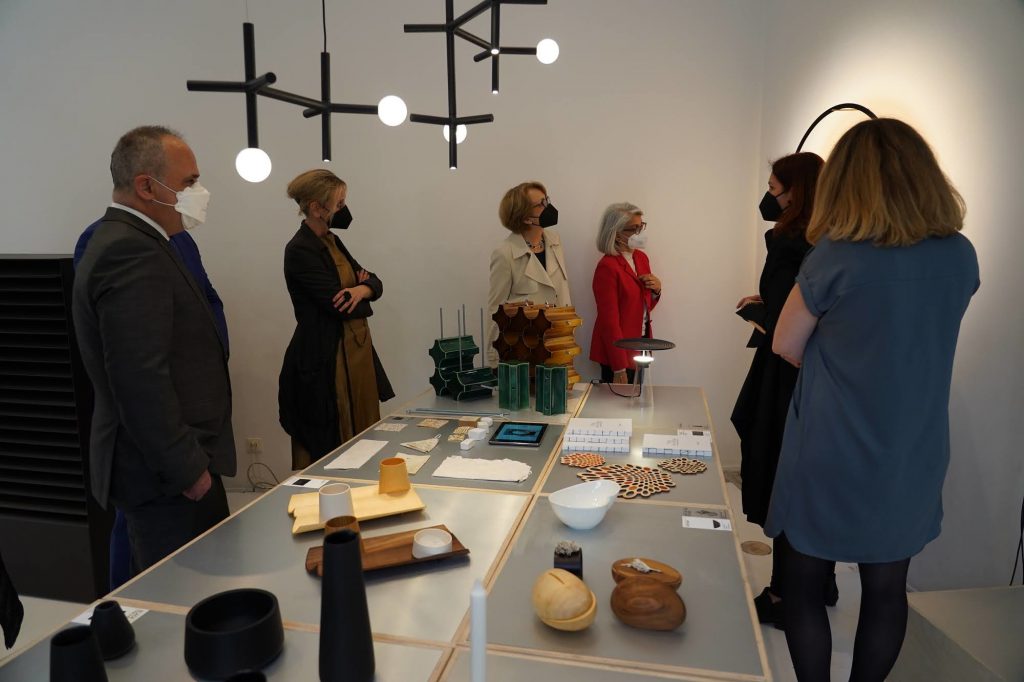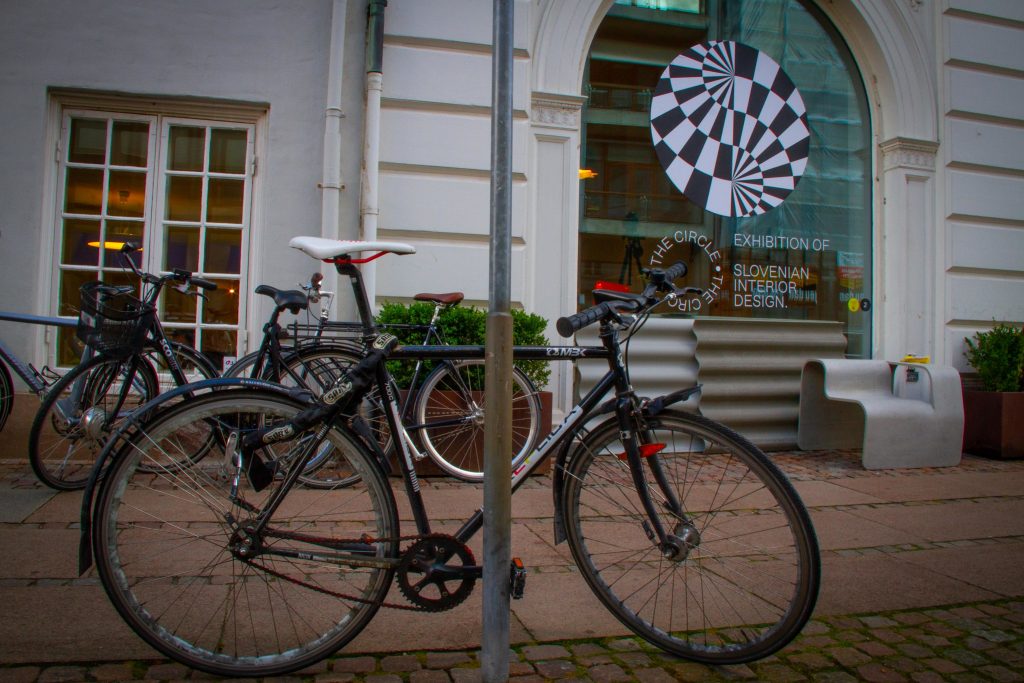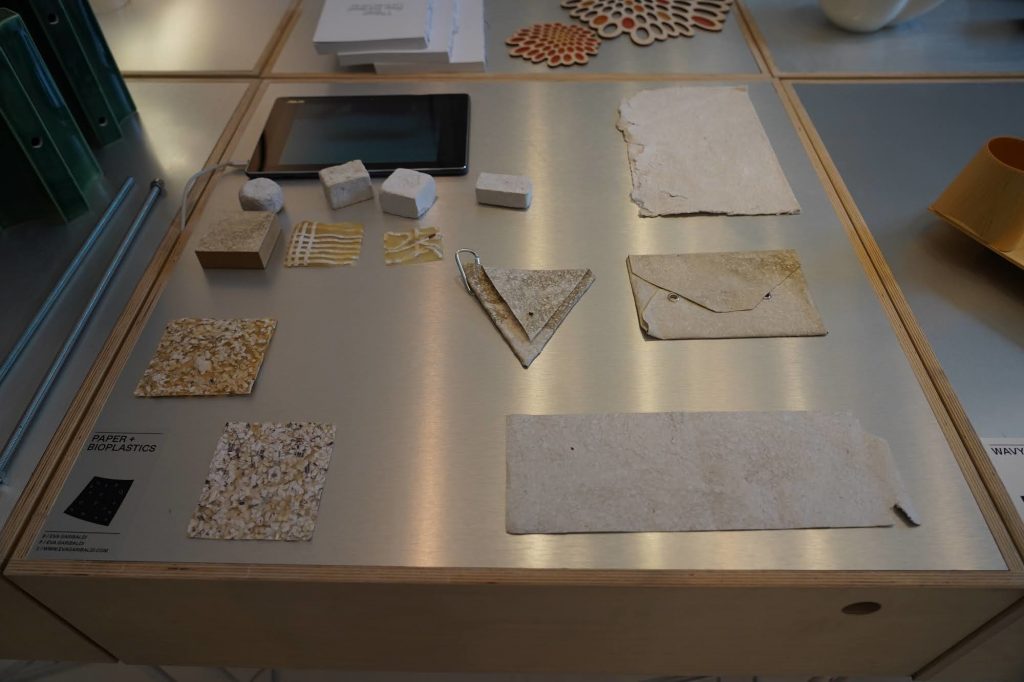The Centre for Creativity (Center za kreativnost) is the first national business development accelerator for professionals working in the creative and cultural sectors in Slovenia. The platform is run by the Museum of Architecture and Design and together with open calls of the Ministry of Culture it forms the support framework for the development of the creative sector in Slovenia. Mika Cimolini, the Head of the Programme for Centre for Creativity and Project Manager, Urška Krivograd met with ECHN and provided their insights on mobility.

Can you briefly describe your organization? Is your organization addressed to makers, do you host makers activities?
Urška Krivograd: We are the first national platform that promotes creative industries in Slovenia, so we have quite a lot of goals that we have to achieve in the areas that we are working on. Basically, we are covering all 13 or 14 areas, sectors or sub-sectors, of the CCIs. One of them is international promotion, we also do research analysis, which has not been done in such a scale before in Slovenia.
We develop new products or services through providing financial support to creatives, in order to create their own projects and start-ups, we orbit knowledge, facilitate workshops and mentoring programmes, we do lots of educational programmes too! Basically, we are contributing to the promotion of the sector in Slovenia and also abroad.
Mika Cimolini: It’s a kind of policy making as well. We are not being only artistic but we also help the creative sector to become more business oriented.
Urška Krivograd: We don’t really differentiate makers; we include them to creatives in general, so there are a lot of designers that we are currently working with.
Mika Cimolini: Makers are basically incorporated in all other programs that we do, for example at the moment we are doing this big exhibition, called the Future of Living, which is travelling all over the world. It will be in 25 countries at the same time and as part of it, there are many exhibits that are made by makers. For example, there are even products that incorporate old traditional crafts that working with the designers become “updated” or kind of more modern. Basically, this traditional craft is used in a contemporary item for contemporary use.
We were also involved in another EU project that was actually researching crafts, pairing them with contemporary designers, it was called Made In. The Made In Platform also had residencies. They were supporting contemporary designers, who looked into ways of collaborating with traditional craftspeople that were important for the local scene. The project’s platform was open for more countries too, so it was Austria, Slovenia Croatia and Serbia.

So, craftspeople were doing crossovers with designers and then there was a travelling exhibition where they actually showed the results of the research that was going on. They were identifying makers and craftspeople that were kind of disappearing and they were looking into ways to revive these traditional professions with the help of contemporary design.
That was the most important residency project that I can remember. We don’t actually do residencies, but we give this kind of support to develop projects and incorporate the possibility of doing a residency or mobility when this is possible.
From your experience, what would be the challenges in mobility for makers and other creatives?
Mika Cimolini: I think one of them is that the information doesn’t get to them so they don’t know exactly what kind of advantages and possibilities exist for them. So, how do you actually inform them about it? What we have here is that we are working with many associations, like social companies, where makers self-organize themselves.
Urška Krivograd: Other times they might not be aware of the benefits for them. They might not know for sure that “this is going to happen” and “Yeah, this is what you will get from your participation”. I would also say that for mobility, like Mika said, we organize a lot of exhibitions that travel abroad. For example, when we were at Milan Design week and only a few designers joined us for the opening, it was such a shame because we couldn’t really represent all 30 products and 30 designers equally, so we were giving them a chance to actually promote their work, while we rented the space. It was still a great exhibition but they could have much more advantages if they were part of a group exhibition. But that’s only because it was the first exhibition from Slovenia in Milan or it hasn’t been one in many years so we realized like in all programmes that it takes some time for the designers and makers to get used to it.

Mika Cimolini: I think so yes but if you say that the makers are designers and manufacturers in one person. I think sometimes the problem is also that they cannot really professionalize because they really have to do everything by themselves, like their own marketing, PR, making and sharing things. So, one of the challenges is that this kind of professionalization is a problem and I think that by self-organizing into this kind of associations or networks, makers can have the opportunity to professionalize more because somebody might be better in marketing or somebody else in PR. This way, they could do it together and share expertise. This is something that we can promote.
Urška Krivograd: We had this Creative Incubator Programme, where we selected 20 individuals from companies or organizations, mainly makers and designers, who had the final product on the market but wanted to upgrade it or sell it more. It was kind of a business/entrepreneurial workshop and some of them felt a bit frustrated that they were both the designers and manufacturers of the product and now they had to learn this new digital marketing thing and financing investment pitching. They also realized that they share anxieties and came up with the idea to share a marketing person, since there were so many makers and ceramic designers to share the costs for that one person to do the PR and marketing for all of them.
From your experience, would you like to add any good practices that you have identified in mobility programmes?
Mika Cimolini: I think that this kind of creativity, not as a good practice, but if you connect in this kind of entity, you can be more mobile within one institution. Meaning if somebody is looking for opportunities for you, for the whole group of people, you can do exhibitions in different places because of same-minded people working together or share their wokspace.
Urška Krivograd: For makers that is true but maybe for other professionals that don’t need a studio or some space I would say, us. We are a good practice example, we have so many programmes now we always have open calls and we are trying to see who else is working on a specific field and help our community to grow with people involved.
Mika Cimolini: And we connect different communities together to create a network which is much stronger!
Urška Krivograd: We don’t have the space or any kind of machines or workspace that they could share but we are doing other stuff with other programs like these exhibitions.
Mika Cimolini: We are looking for opportunities for the makers and other creatives and we try to connect them together.
Urška Krivograd: Now they also trust us, so when we invite them to something they happily accept. This is our challenge and some examples include connecting companies and creatives and makers together so that they could collaborate.
Mika Cimolini: I don’t know how much this is mobility in the traditional sense, but it’s a mobility of makers getting out of the comfort zone of their studio and connecting with other sectors.
Urška Krivograd: But for now, all the companies and creatives are Slovenian because we are a national platform.
How do mobility experiences bring value to your organization and community?
Mika Cimolini: I mean this is what we do, we look for opportunities. This our job actually, to look for opportunities for the creative sector including makers. This is how we benefit, we achieve our goals better
Urška Krivograd: Also, I think that the fact that we try to connect with similar organizations outside Slovenia and do some programs or collaborate with them so that we can include our designers and connect them with those organizations too.
Mika Cimolini: But what we also did is we created this mark of excellence for well-designed products made in Slovenia. With this mark of excellence, we actually try to promote local made hand-made designed products as a value. I think the general public has to figure out that this is a value that this is really important there will be much more opportunities for everybody if this is recognized as a value.

Has mobility contributed to your organization by connecting with a broader community?
Mika Cimolini: All these activities create a much better position for our Centre for Creativity. What we have achieved in a short time, in three and a half years, is that we are recognized by the general public, through connecting makers and creators with local businesses. I think that this is much more important than mobility in terms of internationalization. Its mobility in terms of the product reaching the customer. We also gained trust from policy makers and we’ve been recognized as an entry point for the creative sector, but also the sector trusts us because we can provide them with different opportunities.
What would be a dream mobility scheme for makers? Would you give priority to travel support, social encounters, technical access, or network building?
Mika Cimolini: I think that technical access is too narrow because makers know their own techniques the best so, just providing technical equipment is not enough. I think the best thing is providing subsidize for this kind of projects that have a sense and that they are thought through. I would not even subsidize just for travelling, I mean it is important to provide subsidies that are not so specific. There has to be a plan that they can create by themselves so that they have much more flexibility to actually budget the project according to their needs, either it is the technical equipment, the material research, a new market experience and so on. This way you would have different categories you would subsidize in one budget.
Urška Krivograd: It’s also quite important to get the right context or find the right people for mobility. We could do that! The local community or the companies might not know the makers that exist or they wouldn’t be able to get to them, so I would say that we should expand networks. For example, if you bring a fashion designer to Slovenia you could try to link them with the fashion system. I think that this is really important too.
What is mobility in times of world pandemics? Should we still invest in that? And, considering our travel restrictions, how can we continue to grow and reinforce networks, if we cannot meet one another? And why is that important (or not)?
Mika Cimolini: This is quite the challenge actually; I think that the pandemic cut a lot of these possibilities to have a physical representation. What we have done to these exhibitions is that they are travelling themselves. So, the exhibits would be packed in specific suitcases and we would send them abroad, using the network of our Ministry of Foreign Affairs. So, basically the Embassies helped us to organize these exhibitions. What has happened now is that the whole world became much more local. However, you still need to have physical presence, so how can you do that? This is what we thought of, while doing theses exhibitions, which had limited access but quite a lot of impact because we did them in so many locations.

So, these were all physical events, right?
Mika Cimolini: Physical events yes! It’s crazy I know, but that’s what we did. We even sent some of these suitcases to Latin America or to Eastern countries like Israel, Palestine and Egypt, so not only in Europe. But definitely what happened now is that this kind of events have become more local and it’s much more difficult to reach those networks. So, it’s important that you have some kind of support system that helps you to reach them. You, yourself as a maker cannot do it anymore. In terms of mobility and grants it might be more difficult to do something like this, because of the restrictions in travelling, but I would not just cancel it!
Learn more about the Centre for Creativity
The Future of Living in Berlin
The Circle Exhibition in Copenhagen


